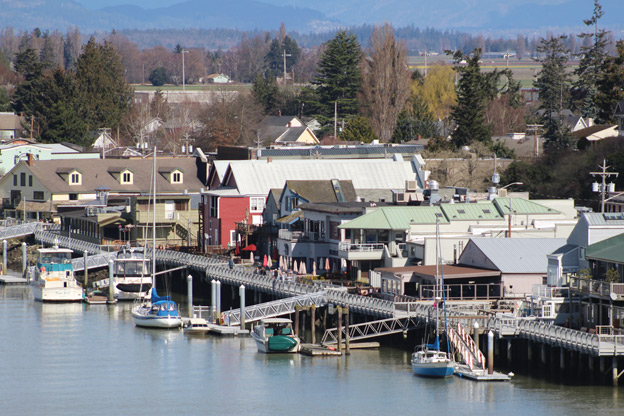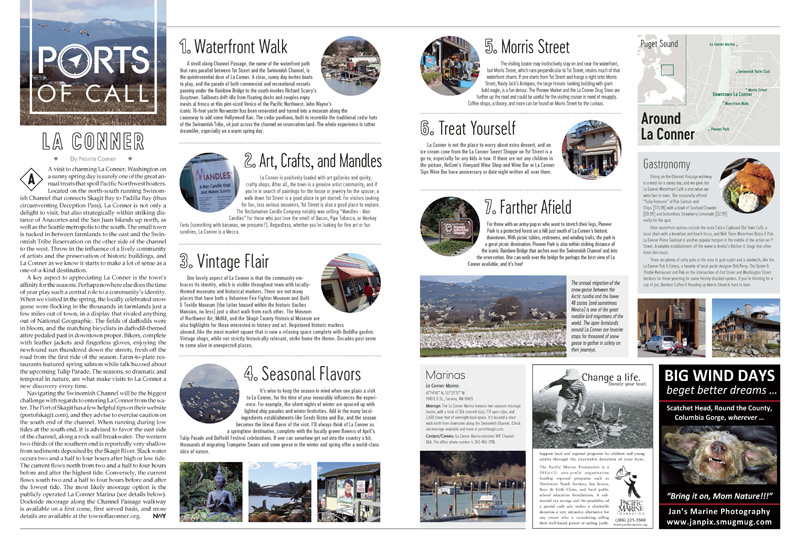 A visit to charming La Conner, Washington on a sunny spring day is surely one of the great annual treats that spoil Pacific Northwest boaters. Located on the north-south running Swinomish Channel that connects Skagit Bay to Padilla Bay (thus circumventing Deception Pass), La Conner is not only a delight to visit, but also strategically within striking distance of Anacortes and the San Juan Islands up north, as well as the Seattle metropolis to the south. The small town is tucked in between farmlands to the east and the Swinomish Tribe Reservation on the other side of the channel to the west. Throw in the influence of a lively community of artists and the preservation of historic buildings, and La Conner as we know it starts to make a lot of sense as a one-of-a-kind destination.
A visit to charming La Conner, Washington on a sunny spring day is surely one of the great annual treats that spoil Pacific Northwest boaters. Located on the north-south running Swinomish Channel that connects Skagit Bay to Padilla Bay (thus circumventing Deception Pass), La Conner is not only a delight to visit, but also strategically within striking distance of Anacortes and the San Juan Islands up north, as well as the Seattle metropolis to the south. The small town is tucked in between farmlands to the east and the Swinomish Tribe Reservation on the other side of the channel to the west. Throw in the influence of a lively community of artists and the preservation of historic buildings, and La Conner as we know it starts to make a lot of sense as a one-of-a-kind destination.
A key aspect to appreciating La Conner is the town’s affinity for the seasons. Perhaps nowhere else does the time of year play such a central role to a community’s identity. When we visited in the spring, the locally celebrated snow geese were flocking in the thousands in farmlands just a few miles out of town, in a display that rivaled anything out of National Geographic. The fields of daffodils were in bloom, and the matching bicyclists in daffodil-themed attire pedaled past in downtown proper. Bikers, complete with leather jackets and fingerless gloves, enjoying the newfound sun thundered down the streets, fresh off the road from the first ride of the season. Farm-to-plate restaurants featured spring salmon while talk buzzed about the upcoming Tulip Parade. The seasons, so dramatic and temporal in nature, are what make visits to La Conner a new discovery every time.
Navigating the Swinomish Channel will be the biggest challenge with regards to entering La Conner from the water. The Port of Skagit has a few helpful tips on their website (portofskagit.com), and they advise to exercise caution on the south end of the channel. When running during low tides at the south end, it is advised to favor the east side of the channel, along a rock wall breakwater. The western two-thirds of the southern end is reportedly very shallow from sediments deposited by the Skagit River. Slack water occurs two and a half to four hours after high or low tide. The current flows north from two and a half to four hours before and after the highest tide. Conversely, the current flows south two and a half to four hours before and after the lowest tide. The most likely moorage option is the publicly operated La Conner Marina (see details below). Dockside moorage along the Channel Passage walkway is available on a first come, first served basis, and more details are available at the townoflaconner.org.



